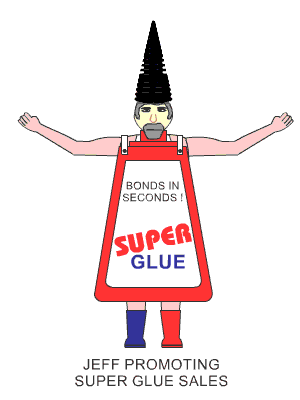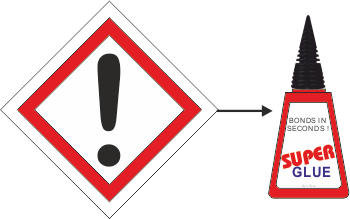Cyanoacrylate is manufactured by different companies under a variety of trade names, ‘Super Glue’ being the most recognised.
It is manufactured in slightly different forms, according the materials it is to join. There is a type manufactured for the medical world, for joining / sealing wounds as a temporary measure. There are other types that are suitable for metals, plastics, ceramics, wood and even textile materials.
Some super glues are liquid, which is helpful when there is a need for the glue to flow along a joint line. Other super glues are in a gel form, which means more precise application can be made.


Cyanoacrylate (super glue) has a number of advantages:
It dries very quickly, which means there is usually no need to clamp materials together for a long time, unlike many other types of glue. Simply apply a little pressure for a few seconds.
It is extremely strong, although early super glues were relatively weak when a shear force is applied.
It is a clear substance, leaving little trace on the materials being joined.
However, there are disadvantages:
It dries so quickly, that repositioning the materials being glued, once super glue has been applied, is usually impossible. Materials must be lined up accurately before applying the glue.
The user must take great care, so that ‘fingers’ are not glued together. This applies to any contact with skin. A visit to a hospital may be required to separate glued skin.
Super glue can be an irritant if contact is made with skin.
Once the tube is open, the remaining glue in the tube will only last a few days / weeks, before it becomes unusable.